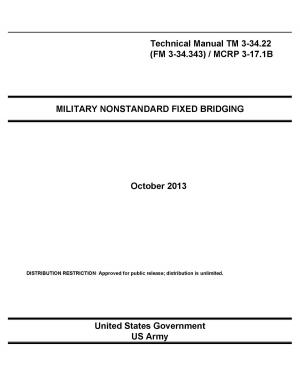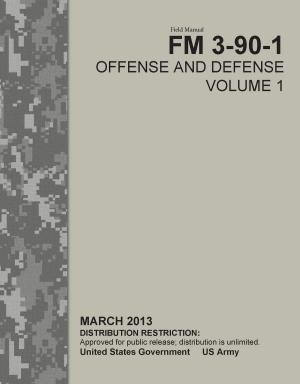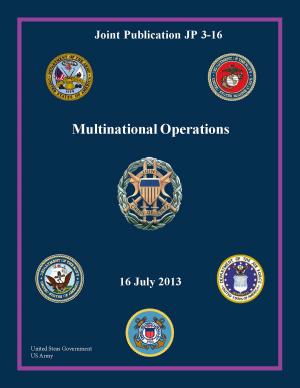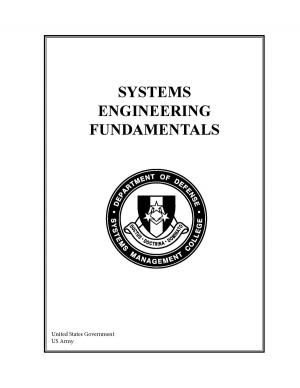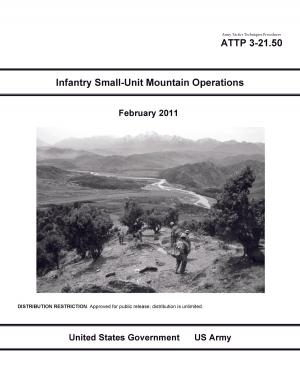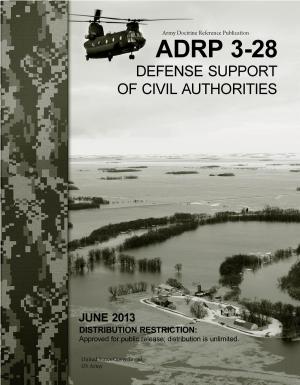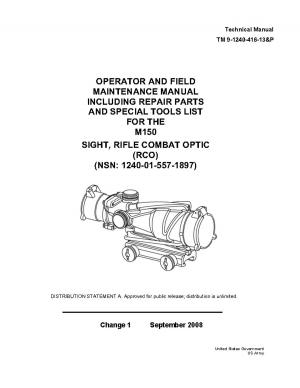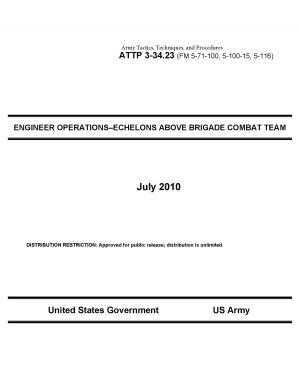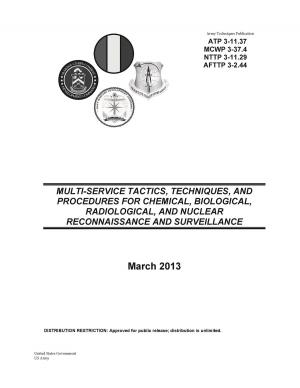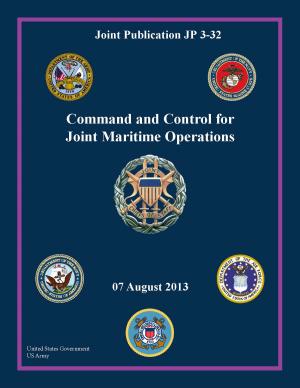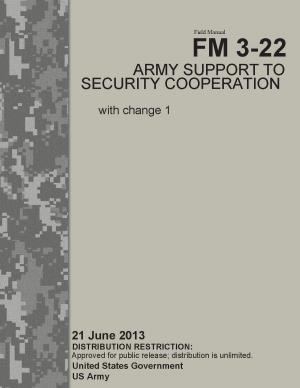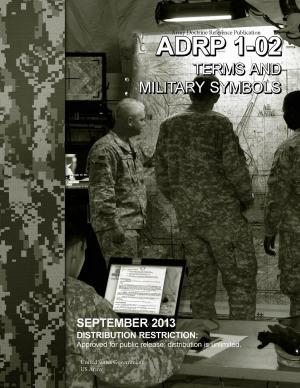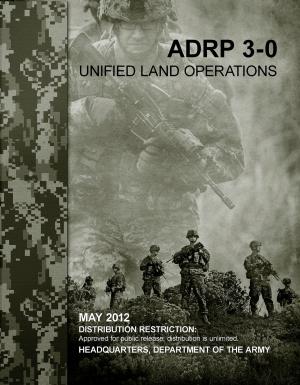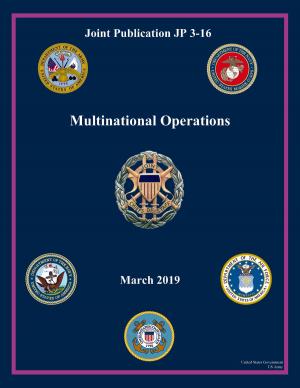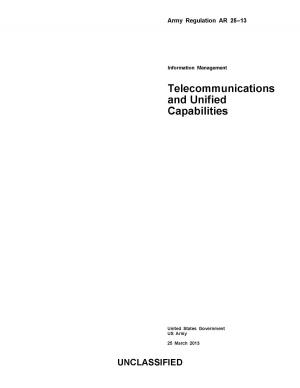Army Techniques Publication ATP 3-57.50 Civil Affairs Civil Information Management September 2013
Nonfiction, Reference & Language, Study Aids, Graduate & Professional, Armed Forces, Science & Nature, Technology, Military Science, Social & Cultural Studies, Political Science| Author: | United States Government US Army | ISBN: | 1230000185988 |
| Publisher: | eBook Publishing Team | Publication: | September 22, 2013 |
| Imprint: | Language: | English |
| Author: | United States Government US Army |
| ISBN: | 1230000185988 |
| Publisher: | eBook Publishing Team |
| Publication: | September 22, 2013 |
| Imprint: | |
| Language: | English |
ATP 3-57.50 establishes the techniques used by CA forces for development of civil information management (CIM) requirements that reside in FM 3-57.
CIM is one of the five core tasks of CA forces. CA forces provide the commander with expertise on the civil component of the OE. CIM is the process that develops the civil component information critical to the commander’s CMO planning. The CIM process, when conducted correctly, provides the commander with accurate, timely, and accurate information to develop courses of action (COAs) that promote the growth, legitimacy, and ultimate transfer of authority to the HN.
ATP 3-57.50 consists of 8 chapters and 2 appendixes:
C1 provides an introduction to the CIM process and details the need for data on the civil component of the OE for the commander’s CMO. The chapter further discusses the role and responsibilities of CA forces in relationship to CIM and the operational processes.
C2 discusses planning and the way CIM incorporates the data into the planning process. Specifically, a discussion of the roles of CA forces integrated in the support of intelligence preparation of the battlefield (IPB) and offensive tasks. The chapter provides techniques and considerations for CA forces conducting CIM in support of commanders conducting CMO.
C3 describes the collection phase of CIM and the techniques used by CA forces to collect the civil data that begins the CIM process. This chapter specifically covers civil reconnaissance (CR), data mining, collaboration, and the integration of these methods into the CIM process.
C4 is designed to assist CA forces with the collation of collected civil data while assigned to CA units, G-9/S-9 staffs, or in CA plans officer positions. This chapter provides guidance for support conventional forces and Army special operations forces (ARSOF).
C5 details the processing of CIM data by CA forces. This chapter is designed to assist CA forces with the processing of collated civil data while conducting operations in support of commander’s CMO plans. The chapter provides guidance for operational and tactical CA forces through all phases of the operation. This chapter provides information that will assist CA forces in synchronizing processing efforts.
C6 provides a detailed discussion on analysis of CIM data and incorporation of this data into useful guidance for the supported commander. In this chapter, extra emphasis is placed on understanding how the analysis of civil information supports the operations process and the requirement of CA forces to be proficient and articulated during this step of the CIM process.
C7 is designed to assist CA forces with CIM production in support of the commander and staff. This chapter provides guidance for the production of CIM products and considerations that will assist in the production process through all phases of operations. This chapter discusses methods of integrating CIM products into the operational process and emphasizes the synchronization of the products into the planning cycles of supported staffs.
C8 details the dissemination of CIM products to the supported commander and staff. The chapter stresses the importance of providing critical information in a format that the force can use to make appropriate decisions about the civil component of the area of operations (AO).
App. A provides the Army’s format for the development of Appendix 3 (Civil Information Management) to Annex K (Civil Affairs Operations) within the OPORD format. The appendix provides detailed explanations of the situational paragraph, executive paragraph, and the assessment matrix needed to assess CIM measures.
App. B provides an example of civil analysis. The civil information is depicted through political, military, economic, social, information, infrastructure, physical environment, and time (PMESII-PT) and is broken down into specific groupings of raw data using areas, structures, capabilities, organizations, people, and events (ASCOPE).
ATP 3-57.50 establishes the techniques used by CA forces for development of civil information management (CIM) requirements that reside in FM 3-57.
CIM is one of the five core tasks of CA forces. CA forces provide the commander with expertise on the civil component of the OE. CIM is the process that develops the civil component information critical to the commander’s CMO planning. The CIM process, when conducted correctly, provides the commander with accurate, timely, and accurate information to develop courses of action (COAs) that promote the growth, legitimacy, and ultimate transfer of authority to the HN.
ATP 3-57.50 consists of 8 chapters and 2 appendixes:
C1 provides an introduction to the CIM process and details the need for data on the civil component of the OE for the commander’s CMO. The chapter further discusses the role and responsibilities of CA forces in relationship to CIM and the operational processes.
C2 discusses planning and the way CIM incorporates the data into the planning process. Specifically, a discussion of the roles of CA forces integrated in the support of intelligence preparation of the battlefield (IPB) and offensive tasks. The chapter provides techniques and considerations for CA forces conducting CIM in support of commanders conducting CMO.
C3 describes the collection phase of CIM and the techniques used by CA forces to collect the civil data that begins the CIM process. This chapter specifically covers civil reconnaissance (CR), data mining, collaboration, and the integration of these methods into the CIM process.
C4 is designed to assist CA forces with the collation of collected civil data while assigned to CA units, G-9/S-9 staffs, or in CA plans officer positions. This chapter provides guidance for support conventional forces and Army special operations forces (ARSOF).
C5 details the processing of CIM data by CA forces. This chapter is designed to assist CA forces with the processing of collated civil data while conducting operations in support of commander’s CMO plans. The chapter provides guidance for operational and tactical CA forces through all phases of the operation. This chapter provides information that will assist CA forces in synchronizing processing efforts.
C6 provides a detailed discussion on analysis of CIM data and incorporation of this data into useful guidance for the supported commander. In this chapter, extra emphasis is placed on understanding how the analysis of civil information supports the operations process and the requirement of CA forces to be proficient and articulated during this step of the CIM process.
C7 is designed to assist CA forces with CIM production in support of the commander and staff. This chapter provides guidance for the production of CIM products and considerations that will assist in the production process through all phases of operations. This chapter discusses methods of integrating CIM products into the operational process and emphasizes the synchronization of the products into the planning cycles of supported staffs.
C8 details the dissemination of CIM products to the supported commander and staff. The chapter stresses the importance of providing critical information in a format that the force can use to make appropriate decisions about the civil component of the area of operations (AO).
App. A provides the Army’s format for the development of Appendix 3 (Civil Information Management) to Annex K (Civil Affairs Operations) within the OPORD format. The appendix provides detailed explanations of the situational paragraph, executive paragraph, and the assessment matrix needed to assess CIM measures.
App. B provides an example of civil analysis. The civil information is depicted through political, military, economic, social, information, infrastructure, physical environment, and time (PMESII-PT) and is broken down into specific groupings of raw data using areas, structures, capabilities, organizations, people, and events (ASCOPE).

